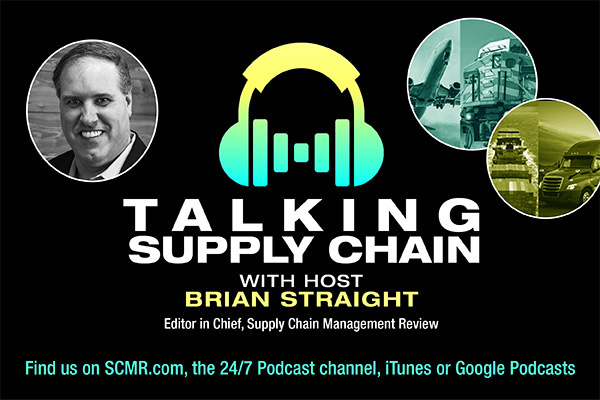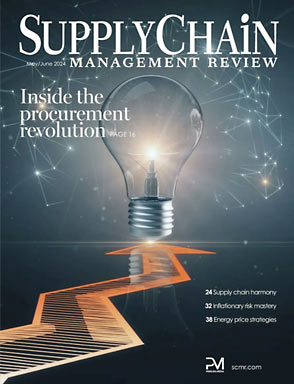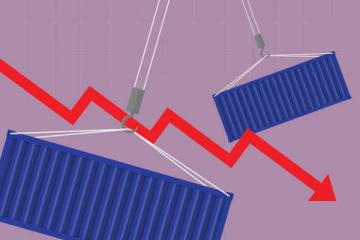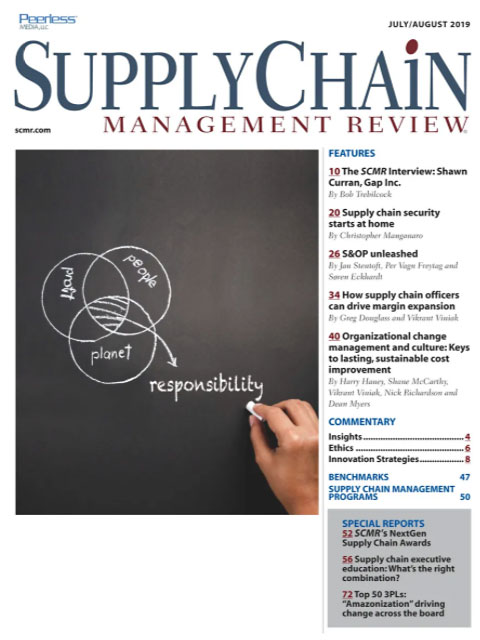Sorry, but your login has failed. Please recheck your login information and resubmit. If your subscription has expired, renew here.
July-August 2019
If you’re a long-time reader of Supply Chain Management Review, you’re familiar with Larry Lapide’s “Insights” column. Typically, Larry is writing about the many facets of planning, but occasionally, he takes on a provocative topic. One year, he questioned whether it was necessary to be a Top 25 supply chain leader, especially if in your industry, good enough gets the job done. Browse this issue archive.Need Help? Contact customer service 847-559-7581 More options
Two winds of change have combined to create a perfect storm around the procurement function. From one direction blows the force of innovative technologies—such as blockchain, robotic process automation and machine learning—that have the potential to unleash procurement from tedious tasks and allow professionals to focus on more strategic, value-added work. At the same time, procurement is buffeted by the headwinds of market disruption: tariffs, cyber attacks and a tight labor market. All of this means that procurement’s days in the back office are long over.
Procurement can and must act as a strategic business partner by driving process improvements, cost savings and customer satisfaction. At APQC, we find that procurement professionals understand this new reality, but are often unsure how to begin updating and streamlining their function. In years past, cost savings was the primary (and often, exclusive) measure of procurement performance. But as many professionals have learned the hard way, over-focusing on cost often creates problems downwind.
The key to unlocking more strategic procurement is end-to-end process improvement. Before you can productively measure and benchmark metrics such as cost savings, you must first assess and define processes. Establishing and enforcing consistent processes allows procurement to align with strategy, avoid redundancies and waste, increase internal customer satisfaction and drive innovation and cost savings that benefit the entire organization.

This complete article is available to subscribers only.
Log in now for full access or start your PLUS+ subscription for instant access.
SC
MR
Sorry, but your login has failed. Please recheck your login information and resubmit. If your subscription has expired, renew here.
July-August 2019
If you’re a long-time reader of Supply Chain Management Review, you’re familiar with Larry Lapide’s “Insights” column. Typically, Larry is writing about the many facets of planning, but occasionally, he… Browse this issue archive. Access your online digital edition. Download a PDF file of the July-August 2019 issue.Two winds of change have combined to create a perfect storm around the procurement function. From one direction blows the force of innovative technologies—such as blockchain, robotic process automation and machine learning—that have the potential to unleash procurement from tedious tasks and allow professionals to focus on more strategic, value-added work. At the same time, procurement is buffeted by the headwinds of market disruption: tariffs, cyber attacks and a tight labor market. All of this means that procurement's days in the back office are long over.
Procurement can and must act as a strategic business partner by driving process improvements, cost savings and customer satisfaction. At APQC, we find that procurement professionals understand this new reality, but are often unsure how to begin updating and streamlining their function. In years past, cost savings was the primary (and often, exclusive) measure of procurement performance. But as many professionals have learned the hard way, over-focusing on cost often creates problems downwind.
The key to unlocking more strategic procurement is end-to-end process improvement. Before you can productively measure and benchmark metrics such as cost savings, you must first assess and define processes. Establishing and enforcing consistent processes allows procurement to align with strategy, avoid redundancies and waste, increase internal customer satisfaction and drive innovation and cost savings that benefit the entire organization.
SC
MR


Latest Supply Chain News
- How CPG brands can deliver on supplier diversity promises
- How S&OP provides the answer to in-demand products
- AI, virtual reality is bringing experiential learning into the modern age
- Humanoid robots’ place in an intralogistics smart robot strategy
- Tips for CIOs to overcome technology talent acquisition troubles
- More News
Latest Podcast

 Explore
Explore
Procurement & Sourcing News
- How CPG brands can deliver on supplier diversity promises
- How S&OP provides the answer to in-demand products
- There is still work to do to achieve supply chain stability
- Blooming success: The vital role of S&OE in nurturing global supply chains
- How one small part held up shipments of thousands of autos
- Shining light on procurement’s dark purchases problem
- More Procurement & Sourcing
Latest Procurement & Sourcing Resources

Subscribe

Supply Chain Management Review delivers the best industry content.

Editors’ Picks






